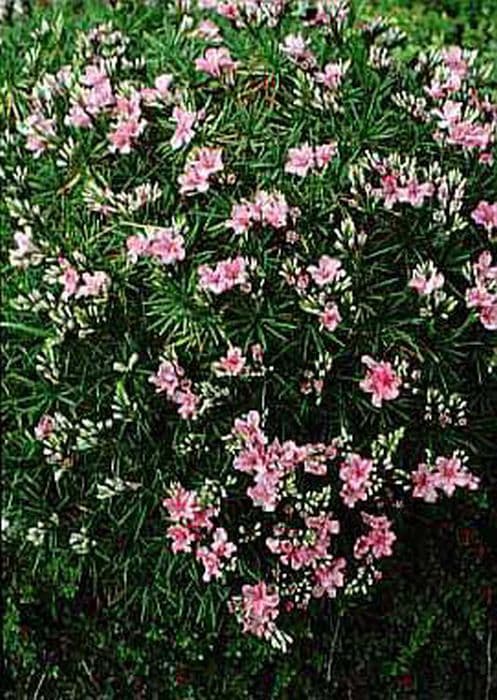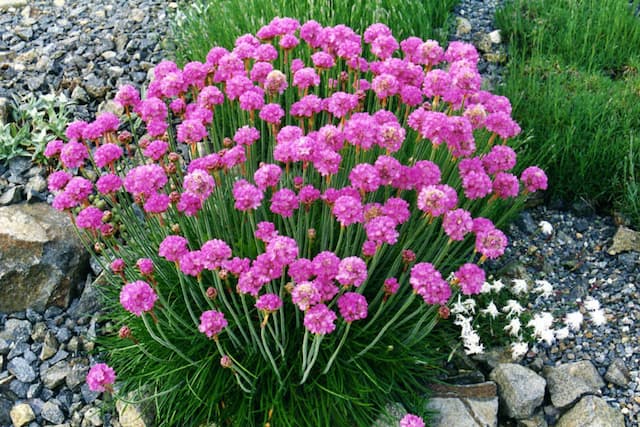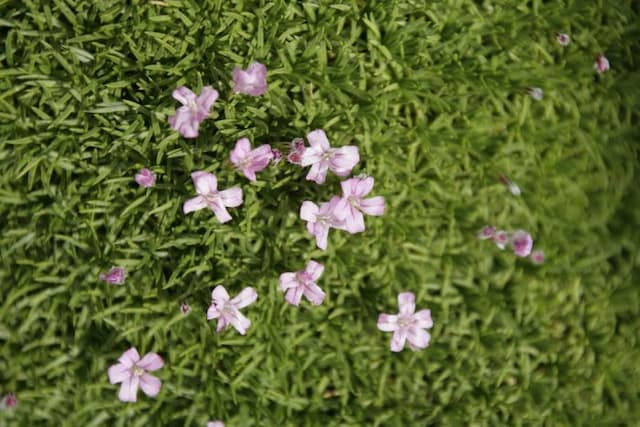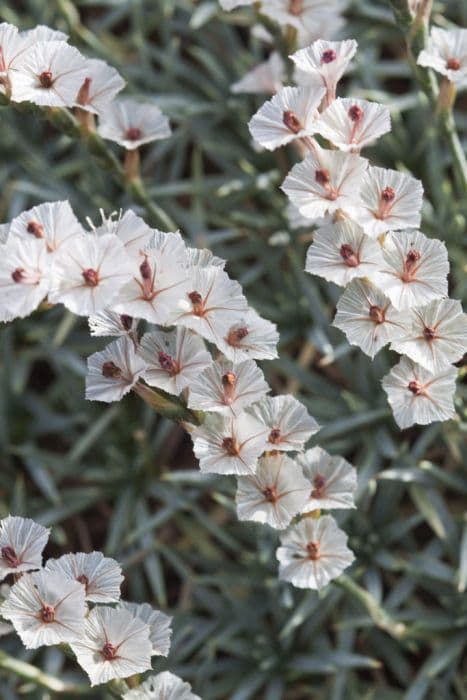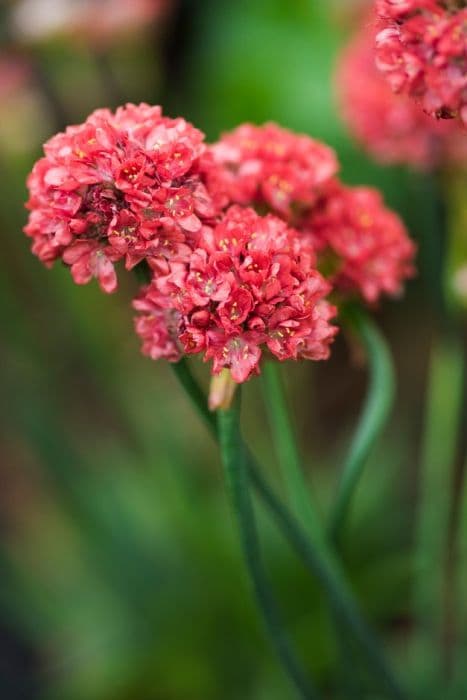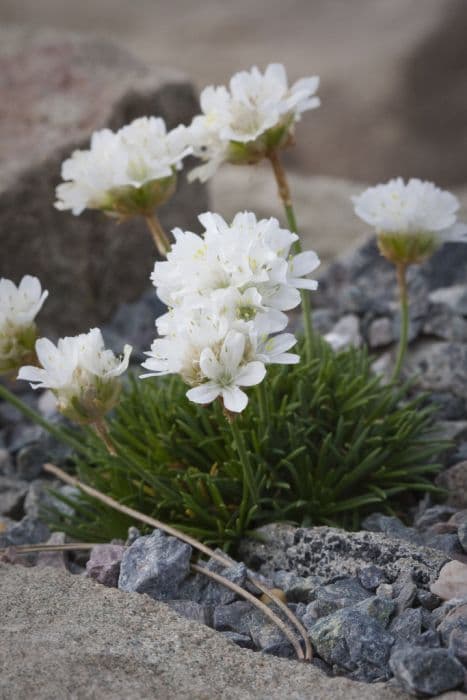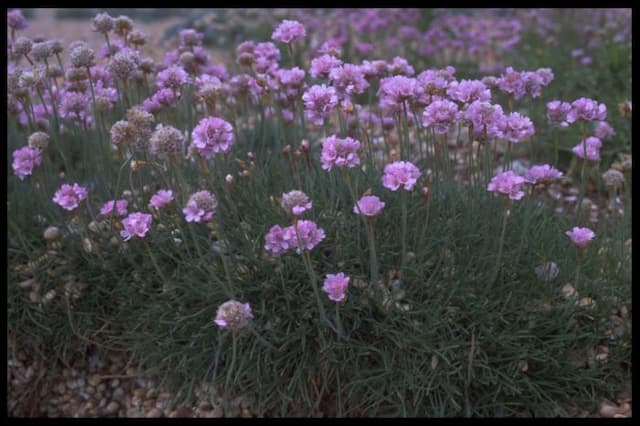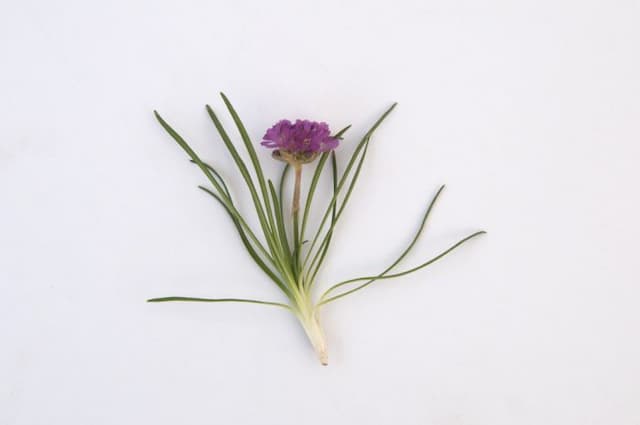Sea Lavender Limonium platyphyllum 'Violetta'

ABOUT
The plant known as 'Violetta' is a variety of sea lavender that is recognized for its distinctive long-lasting flowers. The appearance of this plant is marked by a basal rosette of thick, spoon-shaped leaves that are a grayish-green in color. These leaves provide a contrasting backdrop to the delicate, profuse flowering stems that rise above them. The flowers themselves are a deep violet color, arranged in dense clusters that create a cloud-like effect atop the wiry stems. This gives the plant a misty, airy appearance that is quite eye-catching in a garden setting. These small violet flowers, each with a tiny, papery texture, contribute to the striking visual impact of 'Violetta'. The overall form of the plant is a clumping habit, with the floral display often being used in both fresh and dried floral arrangements due to their persistent beauty and structural integrity. The plant’s resilience and attractive blooms make it a popular choice for ornamental purposes in gardens and landscaping.
About this plant
 Names
NamesFamily
Plumbaginaceae.
Synonyms
Sea Lavender, Marsh Rosemary, Statice, German Statice.
Common names
Limonium platyphyllum 'Violetta'.
 Toxicity
ToxicityTo humans
Statice (Limonium platyphyllum 'Violetta') is not known to be toxic to humans. It is commonly used in dried flower arrangements and does not typically pose a risk if handled or accidentally ingested in small amounts. There are no commonly reported symptoms of poisoning from Statice because it is generally considered non-toxic.
To pets
Statice (Limonium platyphyllum 'Violetta') is also not known to be toxic to pets. It is not listed among the plants that are commonly dangerous to cats, dogs, or other household pets. If a pet were to ingest part of the plant, it is unlikely to cause poisoning, and no specific symptoms are associated with ingestion of this plant. However, ingestion of non-food items can sometimes lead to gastrointestinal upset or blockage, so it is still best to prevent pets from eating plants.
 Characteristics
CharacteristicsLife cycle
Perennials
Foliage type
Deciduous
Color of leaves
Green
Flower color
Violet
Height
1-2 feet (30-60 cm)
Spread
1-2 feet (30-60 cm)
Plant type
Herb
Hardiness zones
3-8
Native area
Central Asia
Benefits
 General Benefits
General Benefits- Drought Tolerance: Sea Lavender is extremely tolerant of dry conditions once established, making it suitable for xeriscaping or low-water landscapes.
- Salt Tolerance: It thrives in coastal regions, tolerating salty winds and soil conditions.
- Long Bloom Time: Sea Lavender has a long flowering period, providing color and interest from summer through fall.
- Attracts Pollinators: The plant is attractive to bees, butterflies, and other beneficial insects that contribute to pollinating gardens.
- Low Maintenance: Sea Lavender requires minimal care, making it a practical choice for gardeners with limited time.
- Deer Resistant: The plant is not a preferred choice for deer, which makes it an excellent choice for areas prone to deer browsing.
- Cut Flower Potential: Sea Lavender is valued for its use in both fresh and dried floral arrangements, having a long vase life.
- Soil Stabilization: Its roots help to stabilize soil, reducing erosion in sandy or loose soil conditions.
- Landscape Versatility: This plant can be used in a variety of landscape applications including borders, rock gardens, and as groundcover.
- Variety of Colors: It offers a range of colors to complement different garden palettes, especially in its violet-blue hues.
 Medical Properties
Medical PropertiesThis plant is not used for medical purposes.
 Air-purifying Qualities
Air-purifying QualitiesThis plant is not specifically known for air purifying qualities.
 Other Uses
Other Uses- Dried Flower Arrangements: Sea lavender 'Violetta' retains its color after drying, making it an excellent choice for long-lasting floral displays.
- Book Pressing: The flat nature of Sea lavender 'Violetta' blooms makes them suitable for flower pressing, often used in arts and crafts or as bookmarks.
- Homemade Potpourri: The dried flowers can be mixed with other botanicals and essential oils to create natural and fragrant potpourri.
- Sachets: Dried Sea lavender 'Violetta' flowers can be used to fill sachets that impart a gentle fragrance to drawers and closets.
- Natural Dye: Sea lavender 'Violetta' can be used as a natural dye for fabrics, offering a range of colors depending on the mordant used.
- Garden Borders: As a low-maintenance plant, Sea lavender 'Violetta' works well in defining garden borders and paths with its vibrant color.
- Educational Resource: This plant can be used to teach botany and horticulture students about the unique properties of halophytes, plants that thrive in salty conditions.
- Photography Props: Photographers may use Sea lavender 'Violetta' as a prop to add color and texture to their botanical and garden photography.
- Wedding Decor: Fresh or dried, Sea lavender 'Violetta' is increasingly popular in bouquets and table settings for a rustic, natural wedding aesthetic.
- Art Materials: The stems and flowers can be incorporated into mixed-media art projects for texture and natural beauty.
Interesting Facts
 Feng Shui
Feng ShuiThe Sea Lavender is not used in Feng Shui practice.
 Zodiac Sign Compitability
Zodiac Sign CompitabilityThe Sea Lavender is not used in astrology practice.
 Plant Symbolism
Plant Symbolism- Remembrance: The common name for Limonium platyphyllum 'Violetta' is Sea Lavender. Sea Lavender is often associated with remembrance. It's a plant that's frequently used in dried flower arrangements, which due to their lasting quality, symbolizes memories that stand the test of time.
- Success and Good Fortune: Sea Lavender is sometimes tied to success and good fortune. With its robust nature and purple hues, which are often connected to royalty and achievement, it can be seen as a positive omen.
- Beauty and Elegance: The delicate appearance and attractive color of Sea Lavender bloom lend this plant to symbolize beauty and elegance, making it a popular choice for special occasions that celebrate these qualities.
- Survival and Perseverance: Given its ability to grow in salty, challenging conditions where other plants might fail, Sea Lavender can also stand for survival, perseverance, and the ability to thrive despite difficulties.
- Peace and Serenity: Sea Lavender, with its soothing lavender-like color and form, can evoke feelings of tranquility, symbolizing peace and serenity in the language of flowers.
 Water
WaterThe Sea Lavender, also known as Limonium platyphyllum 'Violetta', requires moderate watering, especially during its growing season. It's best to allow the soil to dry slightly between waterings. A good rule of thumb is to water the plant once every 1 to 2 weeks, with around 16 to 32 ounces, depending on the pot size and environmental conditions. Avoid overwatering as Sea Lavender does not like to sit in waterlogged soil. During winter or when the plant is dormant, reduce the frequency of watering.
 Light
LightSea Lavender thrives in full sun to partial shade conditions. It should be placed in a spot where it can receive at least 6 hours of direct sunlight daily. An east or south-facing window is ideal for indoor plants, while an unobstructed spot in the garden suits outdoor plants. Adequate light helps the plant maintain its vibrant color and supports blooming.
 Temperature
TemperatureSea Lavender does best in temperatures between 60 to 80 degrees Fahrenheit. This plant can survive minimum temperatures down to about 50 degrees Fahrenheit but should be protected from frost. Prolonged exposure to temperatures above 85 degrees Fahrenheit can stress the plant, so providing some afternoon shade in extremely hot climates can be beneficial.
 Pruning
PruningSea Lavender should be pruned to remove spent flower stems and encourage bushier growth. This can be done after the blooming period, typically in late summer or early fall. Pruning can also help to maintain the plant's shape and remove any dead or damaged foliage. It is not necessary to prune Sea Lavender frequently; once a year is generally sufficient.
 Cleaning
CleaningAs needed
 Soil
SoilThe best soil mix for Sea Lavender is a well-draining blend, ideally sandy loam with a slightly acidic to neutral pH of 6.5 to 7.5. Incorporating ample organic matter and coarse sand can improve soil structure and drainage.
 Repotting
RepottingSea Lavender should be repotted every 2-3 years or when it has clearly outgrown its current container, typically in late winter or early spring.
 Humidity & Misting
Humidity & MistingSea Lavender prefers moderate humidity levels but is relatively tolerant of various conditions as long as it is not exposed to excessively high humidity without proper ventilation.
 Suitable locations
Suitable locationsIndoor
Ensure bright light, well-draining soil, and moderate watering for indoor Sea Lavender.
Outdoor
Plant Sea Lavender in full sun, well-drained soil, and provide occasional watering.
Hardiness zone
3-9 USDA
 Life cycle
Life cycleLimonium platyphyllum 'Violetta', commonly known as sea lavender 'Violetta', begins its life as a seed, which when provided with the right conditions of warmth and moisture, will germinate and develop a small root system and shoot. The young seedling will grow into a rosette of broad leaves, and as the plant matures, it will develop a strong root system and a robust structure capable of supporting flowering stems. During its flowering stage, which often occurs in the second year, it produces tall stems topped with clusters of small, violet flowers that are highly attractive to bees and butterflies. After pollination, which is often aided by these insects, the flowers produce seeds that can be dispersed by wind or water to create new plants. The plant may die back to the ground in colder climates after flowering, but its root system allows it to survive and regrow in the following growing season. Sea lavender 'Violetta' can continue this cycle for several years, perennating through its root system while producing new seeds each year for propagation.
 Propogation
PropogationPropogation time
Spring-Early Summer
Propogation: The most popular method for propagating the Sea Lavender 'Violetta' involves taking cuttings. This is typically done in late spring or early summer when the plant is actively growing. To propagate by cuttings, select a healthy stem that has several sets of leaves. Cut a 4-6 inch (10-15 cm) piece from the stem just below a leaf node, where the concentration of hormones is high to encourage root growth. Strip the lower leaves, leaving two or three at the top. The cutting can then be dipped in rooting hormone powder to increase the chances of successful root development, and potted in a mixture of peat and perlite or sand, which ensures good drainage and aeration. Finally, place the pot in a warm, bright area out of direct sunlight and keep the medium consistently moist but not waterlogged until roots have formed, which generally takes a few weeks.
